The north-eastern Australian state of Queensland (Qld) is famous for its tropical climate. Its capital city is Brisbane.
- The history of Queensland
- Queensland by numbers
- State flag and emblems
- Queensland attractions
- Queensland fast facts
- References
A printable PDF of the information on this page is available in the right-hand column.
The history of Queensland
Indigenous history
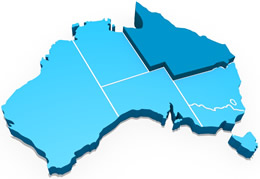
Between Australia and Papua New Guinea are a series of 100 islands named the Torres Strait Islands. The strait is named after the Spanish explorer Luis Vaez de Torres who explored the area in 1606. In 1879, Torres Strait became a part of Queensland. Until 1947 the Aboriginals Protection and Restriction of the Sale of Opium Act 1897 restricted Torres Strait Islanders from working on the mainland.
Eddie Mabo is a famous Torres Strait Islander who fought for Indigenous land rights in Australia. Thanks to his commitment, in 1992 the idea of terra nullius (translating to ‘land belonging to no one’) was overturned and the Aboriginal and Torres Strait Islander people were recognised as the traditional owners of Australia.

European Arrival
Queensland was settled by Europeans in 1825 when Lieutenant John Oxley’s penal colony at Redcliffe, known as the Moreton Bay Settlement, moved to Brisbane. The penal settlement lasted until 1839 when the land was put up for sale to free settlers.
In 1837 the first steamer (named the James Watt) entered Moreton Bay, steered by explorer Andrew Petrie and his family.
In 1842 the Moreton Bay district was opened to free settlement, and four years after, Queensland’s first newspaper, the Moreton Bay Courier, was published.
In 1851 the first Queensland wool was shipped from Moreton Bay to England, signalling the beginning of what would become a thriving, major industry.
On 6 June 1859 Queensland separated from the colony of New South Wales when Queen Victoria signed papers allowing Queensland to become an independent colony (now known as Queensland Day).
In 1867 gold was discovered by James Nash on the Mary River. This was the beginning of a gold rush – an event which greatly shaped Queensland’s economy and population.

Queensland by numbers*
- The population of Queensland is 4,883,700.
- Brisbane (the capital of Queensland) has an estimated population of around 2.28 million people.
- Aboriginal and Torres Strait Islander People account for 4.0 percent of Queensland’s population.
- The top five countries of birth (other than Australia) for people in Qld are: England, New Zealand, India, China and South Africa.
- The top five ancestries for people in Qld are: English, Australian, Irish, Scottish and German.
- The top five languages (other than English) spoken in Qld are: Mandarin, Filipino/Tagalog, Vietnamese, Cantonese and Spanish.
- Queensland is Australia’s second largest state (behind Western Australia) with a total area of 1,730,648 km2.
- Queensland also has Australia’s second longest border (behind New South Wales) with a total length of 3339 km.
* correct at 2016 Census
State flag and emblems
Flag
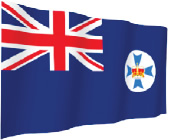
The Queensland flag was introduced in 1876. As with all Australian state flags the Union Jack appears in the top-left corner of the flag of Queensland. The symbol to the right of the Union Jack is Queensland’s state badge. It is made up of a Maltese Cross with a Royal Crown at its centre.
Coat of Arms
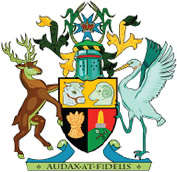
The Queensland Coat of Arms was the first Coat of Arms to be granted to a British Colony since Jamaica’s was granted in 1661. The Queensland Coat of Arms was granted in 1893, making it the oldest in Australia.
Pictured on the shield are symbols of industry and agriculture: a bull’s head, a ram’s head, a sheaf of wheat and a column of gold rising from quartz (to symbolise mining). Surrounding Queensland’s state badge above the shield are two stalks of sugar cane. Below the shield is the state motto Audax at Fidelis meaning ‘Bold but Faithful’. Supporting the shield is the Brolga and the Red Deer.
Emblems
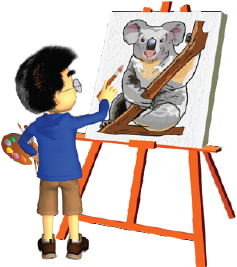
Queensland has three emblems: the faunal emblem, floral emblem and bird emblem.
The animal (faunal) emblem of Queensland has been the Koala since 1971. The name Koala comes from the Indigenous word meaning ‘no drink’ because the Koala gets most of its fluids from dew on leaves and by eating eucalyptus leaves.
The floral emblem of Queensland was named as the Cooktown Orchid in 1959. It is usually purple but other varieties are white.
In 1986, the bird emblem of Queensland was named as the Brolga. The Brolga is the only crane that is native to Australia. Brolgas can stand at one metre tall. During the mating season pairs of birds perform intricate dances to attract their partner.
Queensland attractions
Queensland is renowned around the world as home to some of the world’s most stunning beaches and natural attractions, and has weather that is almost perfect all year round.
The Great Barrier Reef
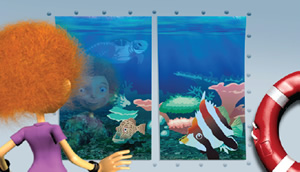
One of Queensland’s most popular natural attractions is the Great Barrier Reef. The Great Barrier Reef is the world’s largest coral reef system, stretching from the northern point of Queensland down to Bundaberg. The Great Barrier Reef is made up of over 3000 reefs and 600 islands. It covers approximately 344,400 km2, making it the Earth’s only living structure that can be seen from space. It is both National Heritage and World Heritage listed.
Many people enjoy scuba diving, snorkelling, sailing or swimming to view the Reef’s impressive diversity of wildlife. The Reef is home to dugongs, green turtles, whales, dolphins, seals, over 250 species of birds, 1500 species of fish, 350 species of hard coral, mangroves and 30 shipwrecks.
The Sir Leo Hielscher Bridges
The Sir Leo Hielscher Bridges that cross the Brisbane River are iconic landmarks and feats of engineering. The bridges are the most eastern crossing of the Brisbane River. Every day, more than 100,000 vehicles cross the Sir Leo Hielscher Bridges.
The original bridge, then called the Gateway Bridge, was opened to traffic by Prince Phillip in 1986. Its twin, the Sir Leo Hielscher Bridge – South was then constructed and then opened in 2010. In the same year, it was decided that the two bridges would be known collectively as the Sir Leo Hielscher Bridges. From the age of fifteen, Sir Leo Hielscher worked for the Queensland Government as a public servant for an astounding 68 years.
Queensland fast facts
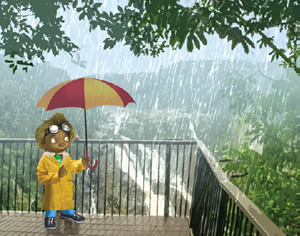
- Queensland is often referred to as the ‘Sunshine State’ and its people are sometimes affectionately known as ‘banana benders’.
- Four Australian Prime Ministers came from Queensland: Andrew Fisher, Arthur Fadden, Francis Forde and Kevin Rudd.
- In the year 1860, the first Queensland stamps were issued.
- Queensland houses the tallest residential building in Australia called Q1. It is over 322 metres tall.
- Many famous people were born in Queensland: singer Cody Simpson, actor Geoffrey Rush, actress Miranda Otto and wildlife warrior Bindi Irwin. The athlete Cathy Freeman was born in Mackay, Queensland. When Cathy competed at the 1992 Olympic Games in Spain she was the first Aboriginal Australian to represent Australia at an Olympic Games. Cathy had the honour of lighting the Olympic Flame at the opening ceremony of the Sydney Olympic Games in 2000. At the same games, she won gold in the 400m.
- Queensland possesses five of Australia’s eleven World Natural Heritage areas: Fraser Island, Scenic Rim National Parks, the Great Barrier Reef, Riversleigh Fossil Fields and the Wet Tropics.
- Queensland is home to over two hundred national parks with more than 1000 species of native vertebrates (animals with a backbone or spinal cord), 572 species of birds and 1600 species of fish.
- Some of the wettest regions of Australia are surrounding Cairns in northern Queensland. Bellenden Ker in north Queensland has the highest annual rainfall in the whole of Australia.
- Queensland has Australia’s biggest theme parks with four located on the Gold Coast: Sea World, Movie World. Wet’n’Wild Water World and Dreamworld.
References
The following links will direct you to the homepage of the websites used as references for this topic.
- Australian Bureau of Statistics: www.abs.gov.au
- Queensland Government: www.qld.gov.au
- australia.com: www.australia.com
- australia.gov.au: australia.gov.au




